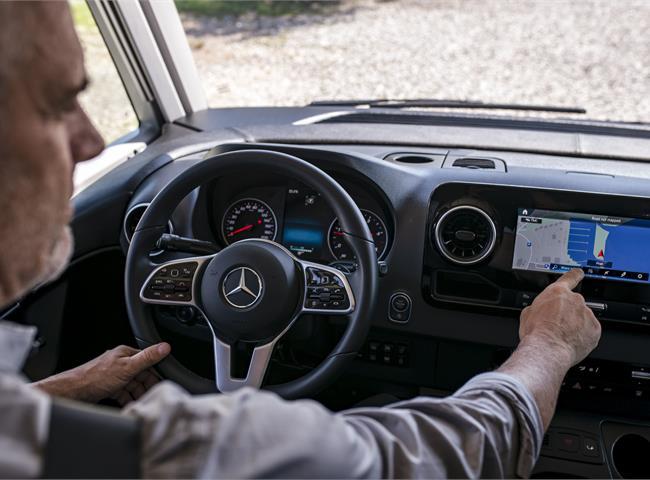
Recently, the proportion of motorhomes sold above the "magic" 3,500 kg has been increasing. In the case of the Adria brand, these include the Supersonic, some Adria Sonic or Adria Coral XL/Matrix on Mercedes Benz and Fiat chassis. Of course, the highest technically permissible or permissible vehicle weight has its advantages, but also disadvantages. Let's take a look at them.

Driving licence
To drive vehicles over 3.5 t, you must obtain a driving licence of at least group C1. This allows you to drive motor vehicles, other than tractors, with a maximum permissible weight exceeding 3.5 t and not exceeding 7.5 t, with a maximum of eight seats other than the driver's seat. A trailer with a maximum permissible mass not exceeding 750 kg may be attached to the vehicle. It may be granted only to the holder of a category B licence. Of course, it is also possible to use a Group C licence, especially if someone already holds one.

Traffic regulations
The main difference is that the speed limits for vehicles 3.5 t - 7.5 t - are lower than for passenger cars. In real traffic, even motorhomes up to 3.5 t often drive considerably slower than the 130 km/h allowed here, for example. This is mainly due to fuel consumption, safety and partly due to internal noise. Typical speeds are then around 90-110 km/h according to the driver, and this is not that much more than the legal limit for heavier motorhomes (80 km/h here, actually 90 km/h). The limits vary from country to country.
In neighbouring Germany, where heavier motorhomes are subject to the HGV rules, caution should be exercised, see table below. In France, special stickers warning of blind spots are compulsory.
In the Vehicle Register, motorhomes over 3.5 t are listed as special vehicles in the M1 category, i.e. as passenger cars, and the same applies to motorhomes up to 3.5 t.


Carrying capacity
Carrying capacity, i.e. how much cargo and vehicle crew you can load in order to not exceed the maximum permissible vehicle weight, is a big topic of discussion in all caravanning areas. And it is well known that vehicles in the 3.5 t category often have very little homologation. Vehicle weights have been increasing recently, possibly due to mandatory safety systems being added on board. As a result, some vehicles are already only approved for two crew members because of the weight.
The solution to endorsement problems may be to buy a motorhome weighing over 3.5 t.The endorsement of such vehicles is often over 1000 kg and you practically do not have to worry about overweight fines. Such vehicles account for approximately 6-7% of all newly registered motorhomes and, given the trends, the number is expected to increase gradually. However, the fact is that these heavier motorhomes are often used outside the caravanning sector, for example to transport horses, racing motorcycles and cars and so on.

Toll and fees
As for tolls, in many countries they are based on criteria other than weight, and the prices are the same as for motorhomes up to 3.5 t. In Slovakia, a vignette is sufficient; in Hungary, tolls will be payable from 2024. In the Czech Republic, neighbouring Poland and Austria, tolls are payable. The only inconvenience is the need to get a toll booth, the price of the toll is then lower than for a motorway vignette. The Polish toll rate is not a problem either, expect to pay around one crown per kilometre on selected roads and motorways.
The real price scare is Austria and its toll motorways. Crossing Austria from the Czech Republic costs about 80 - 100 euros one way. Ironically, Austria and its occasional weighing of motorhomes, together with the amount of possible fines for overloading, is one of the reasons why some caravanners get a heavier motorhome.
Prehľad
Nasledujúca tabuľka poskytuje stručný prehľad základných obmedzení a pravidiel pre obytné vozidlá s hmotnosťou od 3,5 t do 7,5 t. Susedné krajiny sú vyznačené zelenou farbou a výrazné odchýlky v prípade spoplatnenia diaľnic alebo vybraných ciest sú vyznačené červenou farbou. Ako je vidieť, obmedzenia nie sú veľmi významné:

A vehicle weighing over 3.5 t can be an interesting alternative to a conventional motorhome weighing up to 3.5 t. However, you need to pay more attention to the road rules in each country, you need to have at least a category C1 licence, and running costs such as tolls and insurance will be higher, although not significantly so. However, it is possible that all these inconveniences are worth the extra approval.
This article is based on an article by Martin Strimpfl: Don't have unnecessary fear of motorhomes over 3.5 t- Camping and Caravanning Association - Promobil: Keine Ausnahme für Wohnmobile- Womoblog: Schwere Wohnmobile dürfen überholen - ADAC: Wohnmobile von 3,5 t bis 7,5 t in Europa a Wohnmobile in Europa